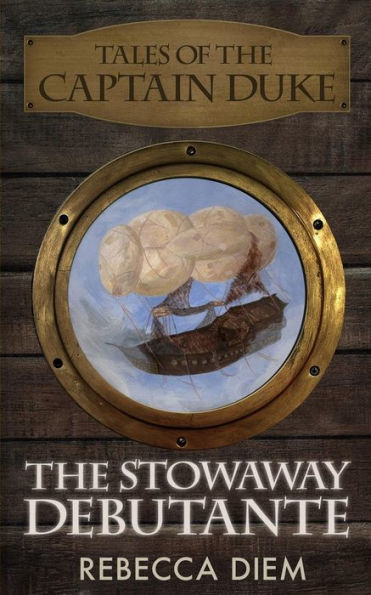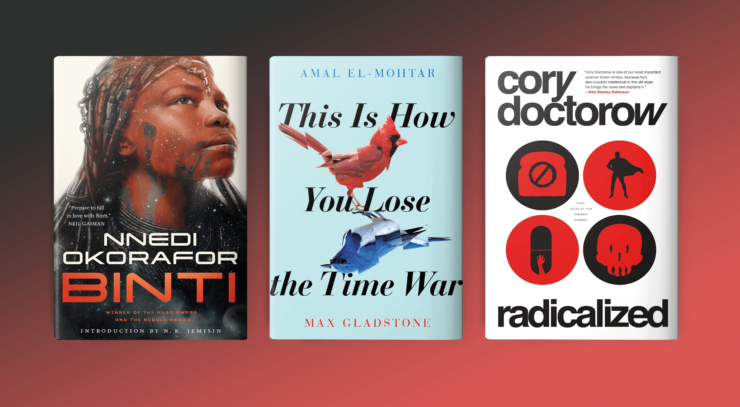As we head into a new year and a new decade, let’s take a moment to consider the novella… These intermediaries between the disparate realms of the novel and the short story are experiencing a renaissance in the publishing world. But for readers and writers who are new to the medium, a brief look at the reviews for even popular, award-winning novellas reveal some common points of confusion over length, reader expectations, and classification, so let’s define our terms.
According to Hugo Award guidelines, a novella-length work is between 17,500 and 40,000 words, but the exact figures can fluctuate based on the market and genre. The best novellas are those that create immersive, impactful experiences by focusing on a particular element of character, plot, or theme and slowly teasing out the rest of the world. They often borrow an economy of language from short fiction. You’re unlikely to have pages upon pages devoted to the dinner menu or other inessential details, but a novella conveys the same information about the setting in a few sentences without sacrificing momentum or tone. They trust in your imagination to fill out the world of the story, to bring your curiosity to the table as you read.
With a good novella, I’m able to dip my toes into an adventure, especially when a busy schedule prevents me from dedicating time to longer works. Short stories pair well with your morning coffee; novels are best for long stretches of uninterrupted time on evenings or weekends. Novellas fit nicely into a tote bag for your commute and all those spare moments collected over the course of the day, but can also be finished in a couple hours for a satisfying and immersive reading experience.
When I was researching market opportunities in 2014 after finishing my first novella, I stumbled on a lot of advice similar to this 2008 Writer’s Digest piece advising novella writers to “stick it in a drawer” or pad it out to a full-length work. Despite the classics in the form—think Wells’ The Time Machine, Gilman’s The Yellow Wallpaper, Kafka’s Metamorphosis, Hemingway’s The Old Man and the Sea, Stephen King’s The Long Walk—traditional publishing opportunities have recently been limited to magazines, short fiction imprints, or collections by established authors. But novellas are now being actively solicited by all major publishers, and early adopters of the trend toward shorter works (including Tor.com) are leading the field with awards and accolades.
The novella’s comeback can be attributed to the emergence and increasingly popularity of e-books, print-on-demand publishing, and alternative distribution models, making them a more attractive, lucrative option in the digital age. There are rich opportunities here for both writers and readers of concise, efficient storytelling.
As a reader, I tend to favour smart books with quick pacing and dynamic characters. One of the most stunning novellas I’ve read this year is This Is How You Lose the Time War by Amal El-Mohtar and Max Gladstone (published by Simon and Schuster), who play with an epistolary form in a work that offers delight and devastation in equal measure. (I’ve deleted the rest of this paragraph three times in an attempt to avoid spoilers, so just @ me if you want to discuss…) This book takes a high-concept approach to a familiar trope and makes it feel daring and new.
I also love Nnedi Okorafor’s Binti series, which likewise begins with two characters from very different worlds navigating a conflict with no apparent resolution. In the later books, we learn more about the impact of their choices on their worlds and the galaxy at large. Nnedi Okorafor summarized the series as “Girl leaves home. Girl comes home. Girl becomes home.” I really enjoyed the episodic narrative, and the way she expands the story and drives the plot forward without ever losing the focus on Binti herself.
Of course, action-packed stories are not all the medium has to offer: One of my local indie bookstores has an entire section devoted to “plotless fiction,” and novellas are an excellent medium to devote to exploring a specific character or situation without much narrative drive. Take Patrick Rothfuss’ The Slow Regard of Silent Things. Does it advance the plot of The Kingkiller Chronicle? Not really. But it is wonderful to spend quality time with one of the series’ most enigmatic characters, and to see the world through Auri’s perspective instead of Kvothe’s.
I also really enjoyed the thematic connections in Radicalized, a collection of four Black Mirror-esque novellas in which Cory Doctorow explores the technological and social disruption possibilities of the near future. Unauthorized Bread, for example, takes the act of jailbreaking a locked device, adds a measure of socio-economic disparity, and mixes in a healthy dose of anxiety over our reliance on proprietary tech. It’s a bite-sized tale that deftly weaves in an indelible teaching moment on the Digital Millennium Copyright Act, with more context and background than a short story and without the bloat of B-plots that might dilute its impact.
With their compact nature, novellas are also particularly well-suited to adaptation in other mediums. The hit series Killing Eve is based on a quartet of self-published e-books by Luke Jennings that were later collected into Codename Villanelle. The rise in professionalism and profitability for self-publishing has also increased the viability of novellas—they’re an excellent option in terms of experimenting with serialization, and can help emerging writers to develop their voice.
Buy the Book


The Stoaway Debutante
This year marks the fifth anniversary of my first novella, The Stowaway Debutante. I favoured the length because, as a new writer, I wanted to build up my confidence with a shorter format. (I also wanted my friends and family to actually read my work, and while they love me dearly, many would likely have balked at the prospect of a massive, George R.R. Martin-style wristcracker as my first book.)
As a writer, playing with the compact style of the novella helped me to focus my narrative into episodes of growth, and how that growth impacts the characters’ choices at the beginning and end of the series. I also wanted to pay tribute to the era of 25-cent pulp fiction paperbacks, writing Clara, my protagonist, into all kinds of uncanny scenarios and wild adventures (except, you know, as the active heroine instead of the love interest).
As the last few years have clearly shown, there is a market for this type of intermediate narrative, which arguably fills an underserved gap in literary preferences for character studies and tightly-plotted storylines. In an era of infinite content and fractured attention spans, where creators need to build trust with their audience in exchange for the investment of their valuable energy and time, novellas are compelling, easily consumable, and reflect a certain awareness of their readers’ busy lives.
So, readers, fear not: these slim additions to your TBR piles offer a lot of fascinating mileage in a deceptively small package. And writers, it’s time to brush off your trunk manuscripts and prepare for edits! The novella isn’t just back for the moment—it’s here to stay.
Rebecca Diem is an author and poet of smart, hopeful speculative fiction. Her work includes the steampunk novella series Tales of the Captain Duke. Rebecca now calls Toronto home and is on a never-ending quest to find the perfect café and writing spot. You can follow her adventures on Instagram or Twitter or visit her website for more stories.










